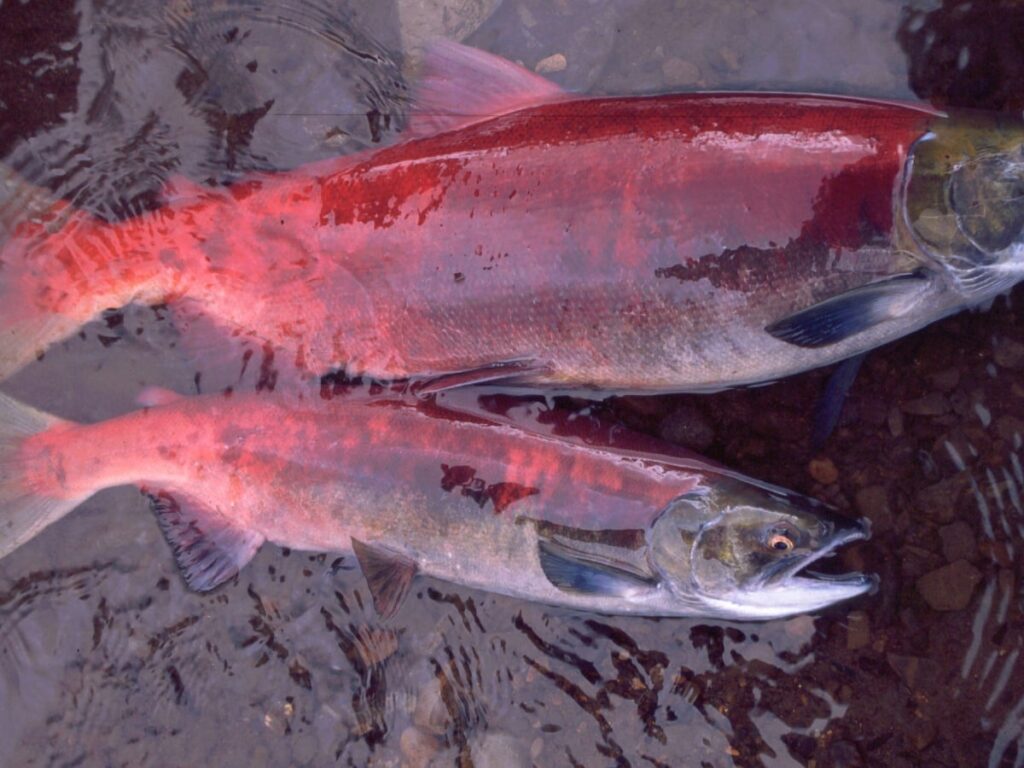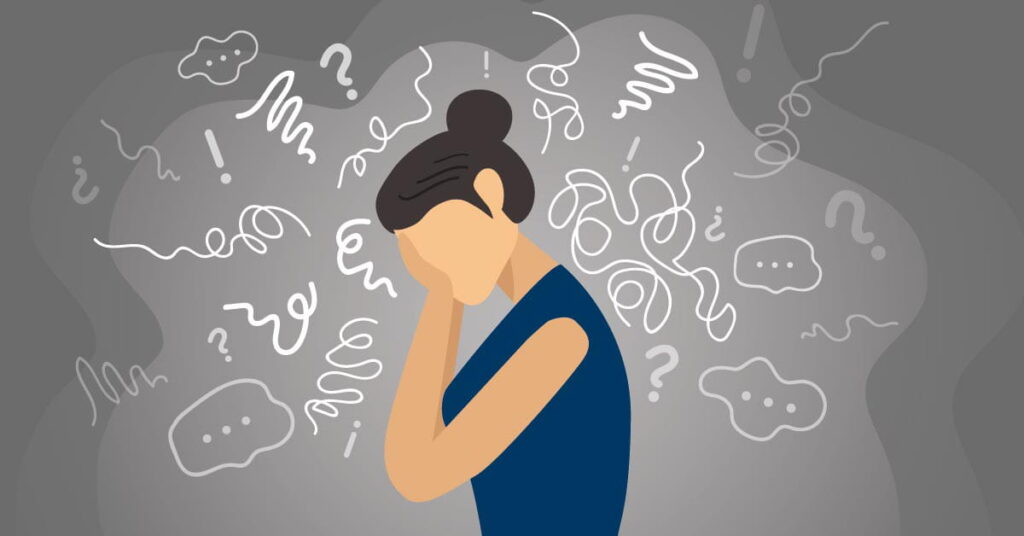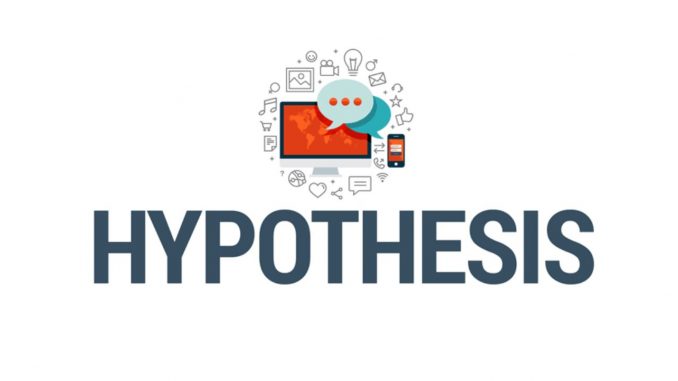In scientific research, we typically use hypotheses for our statistical analysis.
A hypothesis is a good or educated guess that tries to explain how two or more things are related. It is a statement that makes a prediction when there is no hard evidence yet or just before we embark on an investigation.
A researcher needs a hypothesis to guide his research and provide the conceptual framework.
However, it turns out that one hypothesis isn’t enough! A researcher needs to use not one but two hypotheses. These are known as the null and alternative hypotheses.
- Null Hypothesis: This hypothesis is the starting point of any investigation. Its claims are assumed to be true until it is proven otherwise by experiment. A Null Hypothesis usually assumes that no association exists between two variables or phenomena. It is symbolized with H₀, which you can read as H-naught, H-null, or H-zero. A Null Hypothesis is the one that a researcher is trying to prove wrong.
- Alternative Hypothesis: This is the hypothesis that the researcher is trying to prove by his study. Unlike the Null Hypothesis, it assumes a systematic relationship exists between the variables. It is symbolized by H1.
Null and alternative hypotheses are always opposite or contradictory statements.
After a researcher has finished examining the evidence from a sample data, he has to make a decision. This is either of these two options:
- Reject H0: this happens if the sample information supports the alternative hypothesis
- Don’t reject H0: this happens if we don’t have enough evidence to refute the Null Hypothesis.
Here are 10 null and alternative hypothesis examples:
1. How do salmon get to their stream homes?

Salmon are fish that live in rivers and oceans. When they are spawned by their parents, they leave and migrate to saltwater regions.
Years later, the now-adult salmon return to their place of birth in order to spawn. It’s a scientific wonder how they are able to get home.
A Null Hypothesis would be proposed that the fish don’t use their eyesight to find their spawning home.
An Alternative Hypothesis states the opposite: that the fish use their eyesight to locate their spawning home.
We can experiment to test this hypothesis. We capture some fish that had found their way home. We blindfold some but not others. Then we release the fish in a distant river away.
If the blindfolded and unblindfolded fish both reach home in large numbers, then the alternative hypothesis is disproven. This also means the null hypothesis is not rejected.
2. Obesity and income levels
Do people with high income have more obesity?
To test this, we can formulate the hypothesis as:
H0: There is no relationship between obesity and people having a high income
H1: High-income people tend to be overweight or obese.
If we find a correlation between high income and obesity after collecting and examining the data, we accept the Alternative Hypothesis and reject the Null Hypothesis.
3. How does light influence plant growth?

This question is a way of investigating photosynthesis. We can form our hypothesis in the following way:
H0: there is no significant difference in plant growth in light
H1: Plants grow faster in light due to the process of photosynthesis
This can be tested by comparing plant growth rates in light and poor light.
If we find a correlation between plant growth rates and light, we accept the Alternative Hypothesis and reject the Null Hypothesis.
4. Flight possibilities and impossibilities
Lord Kelvin was a respected physicist who had made great discoveries. So, when he said that heavier-than-air-flight couldn’t work, almost everyone believed him. It also seemed plain from the fact that humans couldn’t fly due to their weight.
We can form our hypothesis:
Null Hypothesis states that flight is not possible for anything heavier than air.
Alternative Hypothesis would state that heavier than air flight is possible by producing lift from a surface such as a wing.
By constructing and testing winged objects, if we confirm they can fly, we accept the Alternative Hypothesis and reject the Null Hypothesis.
5. Precipitation levels
How do precipitation levels compare between a hilly place and adjacent plain areas?
This can be tested by formulating our hypotheses as follows:
H0: hilly places and adjacent plain areas show no difference in their precipitation levels
H1: hilly places have higher precipitation levels than adjacent plain areas.
If by observation we find there is more precipitation in hilly places, we accept the Alternative Hypothesis and reject the Null Hypothesis.
6. Does having people talk about their problems help their anxiety?

In the field of psychotherapy which was pioneered by Sigmund Freud, it is stated that repressing troubling thoughts is unhealthy because it leads to psychological distress.
Instead, people should speak out these thoughts or share them, which alleviates distress.
We can set up a Null Hypothesis: Talking about one’s problems does not alleviate anxiety.
The Alternative Hypothesis states: Talking about one’s problems alleviates anxiety.
If studies show that the Alternative Hypothesis is true, we reject the Null Hypothesis and accept the Alternative Hypothesis.
7. Do black holes exist?
Black holes are theorized as stars that have collapsed making their mass superdense and exerting great gravitational forces that suck in anything nearby including light.
So, the black star appears invisible in the darkness. Many people struggle with this idea, with many being skeptical.
We can have our Null Hypothesis stating that black holes don’t exist since no light is seen at their presumed locations.
The Alternative Hypothesis would state that despite being invisible, black holes exist because their presence can be confirmed by their gravitational force which is felt by nearby objects.
By astronomical observations, we can look for celestial bodies that orbit unseen objects. This would prove that black holes exist since their gravitational force causes these celestial bodies to circle them.
This leads to the rejection of the Null Hypothesis and acceptance of the Alternative Hypothesis.
8. Rainbow spectrum

White light is a combination of the colors of the spectrum. Based on this, we can formulate a hypothesis and test it.
Null hypothesis: white light produces no spectrum when passed through a prism
Alternative hypothesis: white light is a spectrum, therefore different lights will refract at different angles through a prism since they are of different wavelengths.
We can carry out a prism experiment by passing light through a prism.
If it produces a light spectrum, then we have proved our alternative hypothesis right. The null hypothesis is therefore rejected.
9. The economic impact of covid-19
To study the effect of the covid 19 pandemic, we can devise the following hypotheses for the question: How do the COVID 19 infection rates in the US impact employment?
Null hypothesis: the COVID 19 infection rates in the US have no significant impact on employment.
Alternative hypothesis: the COVID 19 infection rates in the US leads to a reduction of employment.
If we look at the employment numbers of the period when COVID 19 infection rates had spiked, and notice significant job losses, then our alternative hypothesis has been proven. Simultaneously our null hypothesis should be rejected.
10. Criminal Trials

Hypothesis-testing can be compared to court trials in which we try to prove a defendant guilty or innocent. The criminal system usually presumes a person innocent until he is proven guilty.
Therefore, our hypotheses are:
H0: the accused person is not guilty
H1: the accused person is guilty
This hypothesis can now be tested by collecting and examining evidence. These include blood stains, fingerprints, hair samples, etc.
If the prosecution finds enough evidence for its case, then the person is found guilty. We accept the Alternative Hypothesis and reject the Null Hypothesis
Conclusion
Null and Alternative hypotheses are two opposite twins who are inseparable but can’t agree on virtually anything.
Yet, scientists can’t do any credible science without this quarreling duo!
Related Post: 8 Examples of Hypothesis Testing In Real Life

